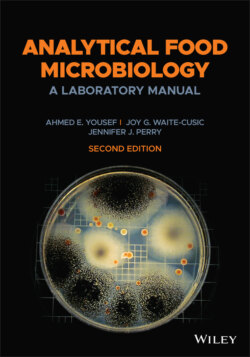Читать книгу Analytical Food Microbiology - Ahmed E. Yousef - Страница 41
Air Sampling
ОглавлениеMicroorganisms may become airborne due to activities such as water spraying, dry ingredient handling, and vigorous air movements. Air‐suspended dust particles can carry microorganisms. Mold and bacterial spores are common contaminants of air since they survive dryness and other detrimental environmental factors. The microbiological quality of air in a processing facility impacts the quality and safety of perishable food processed in this facility. Improper filtration of air entering a facility or recycling air from the raw product area into the finished product area can result in food contamination. Air quality in the packaging area is particularly important for the control of post‐processing contamination. Therefore, determining the microbial load in air is an important task.
Sedimentation is a simple method to measure air quality. It involves exposing agar media plates to air by leaving these plates uncovered in the location to be sampled. Air contaminants will sediment by the force of gravity during the exposure time (e.g., 15 min). The plates are incubated, and the colony count may be considered proportional to air contamination level.
Air in a particular environment may also be forcibly impacted onto the surface of agar media plates using mechanical means. Jets of air are directed over the media plates so that air load collides and sticks to agar surface. After receiving a measured air sample, the agar plates are incubated, and colonies are counted. Air streams also may be filtered through a microfilter. Microorganisms are released from the filter using a suitable diluent and the microbial load is counted.
